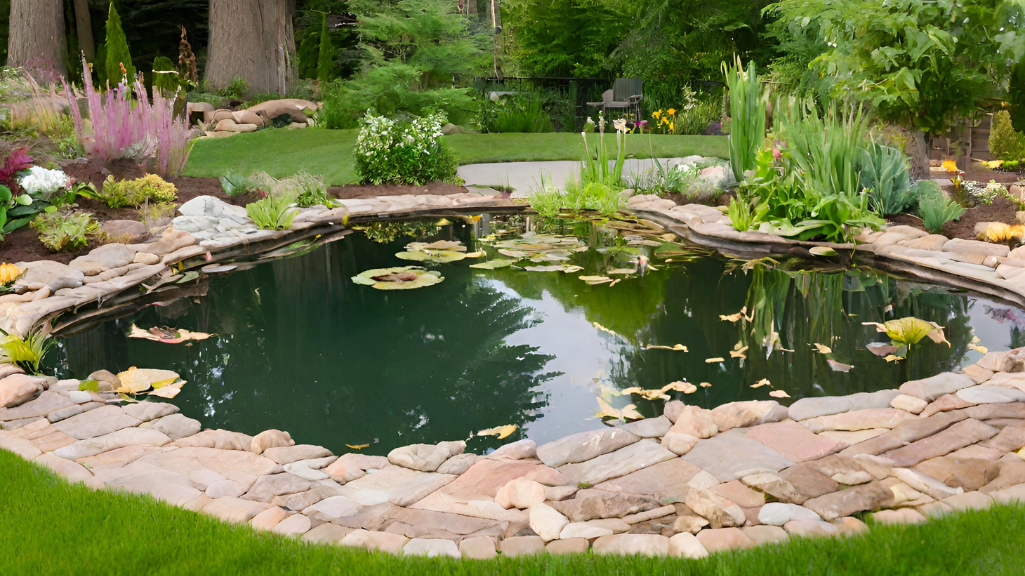
Pond Liner FAQ: Choosing the Right Liner for Your Backyard Oasis
Having a backyard pond can be a dream come true. It adds beauty to your landscape, provides a peaceful place to relax, and can even boost your home's value. But not everyone has naturally occurring clay soil that can hold water effectively. That's where pond liners come in!
Pond liners are waterproof barrier made of synthetic materials like PVC or RPE that are placed at the bottom and sides of your pond to prevent water loss due to seepage. They are an essential element for creating a beautiful and functional pond, especially if your yard doesn't have the right soil conditions.
Choosing the Right Liner for Your Large Pond
When it comes to large ponds (over 5,000 square feet), standard EPDM pond liners used for smaller ponds just won't cut it. They become difficult to manage due to required field seaming, and the material may not be strong enough for expansive areas.
Here's what you should consider for large pond liners:
Customizable Large Pond Liners
The Pond Guy recommends using custom-fabricated large pond liners made from PVC or RPE materials for ponds exceeding 5,000 square feet. These liners are specifically designed to reduce field seams, making installation easier and stronger.
Underlayment for Added Protection
For large pond liner installations, it's recommended to lay down a 12-inch layer of soft sand or soil underneath the liner. This underlayment provides a protective cushion that safeguards the liner from punctures caused by rocks or other sharp objects.
Material Options for Large Pond Liners
- Pros: Widely used, very flexible, and cost-effective.
- Cons: Can degrade in sunlight. Requires at least 12 inches of sand or soil cover for protection.
- Pros: More durable due to reinforcement, ideal for areas with water activities or wildlife. More resistant to sunlight degradation.
- Cons: More expensive than PVC liners. May still require some sand or soil cover in exposed areas.
Liner thickness is an important factor to consider, and it varies depending on the material you choose.
- PVC Liners: Available in 20 mil and 30 mil thicknesses. Higher mil equals higher puncture resistance.
- RPE Liners: Available in 36 mil and 45 mil thicknesses. Similar to PVC, higher mil provides better puncture resistance.
Is a Liner Right for Your Pond?
Before you decide on a liner, here are some essential considerations:
- Existing Water: If your pond already retains more than 25% of its desired water capacity, it's not ideal to line it for extended periods. You'll need to drain the pond completely or add at least 2 feet of soil on top of the liner.
- Pond Size: Accurately measure your pond's size using a flexible tape measure. Measure the waterline perimeter, following the curves of the bottom. Add an additional 15' to 20' to account for liner settling and the anchoring trench (located 5 feet from the water's edge) during installation.
- Slope: Steeper slopes can place stress on the liner and cause premature wear. Both PVC and RPE liners are designed for ponds with a 3:1 slope or gentler.

Lake & Pond Pros: Your One-Stop Shop for Large Pond Liners
We offer custom-made PVC and RPE pond liners to meet your specific needs. Fill out our inquiry form to tell us more about your pond project, and we'll help you choose the perfect liner for your backyard oasis. If you have any questions, our friendly pond experts are always happy to assist you. Call us at 866-766-3435 for a consultation.
Installing a large pond liner can transform your backyard into a beautiful and tranquil space. By choosing the right liner material, thickness, and considering factors like existing water, pond size, and slope, you can ensure a successful pond creation project.


 What are Pond Liners?
What are Pond Liners?

Leave a comment